Photo gallery Radiolab co-host talks with students, tours labs
Science Journalist in Residence Latif Nasser chatted with University of Wisconsin–Madison journalism and life sciences communication students, toured research laboratories and brought his science journalism expertise to campus Oct. 12 through 14. Nasser is the co-host of New York Public Radio’s Peabody Award-winning Radiolab and the host and executive producer of the science documentary Netflix series Connected. Whether he was learning about plasma science and fusion energy, holding a whale eye, feeding coronavirus-and-cancer-fighting nurse sharks, or enthralling students in classrooms, Nasser brought an endless curiosity and infectious personality to campus. UW–Madison’s students and scientists inspired Nasser as much his visit, talk, and interactions inspired them.
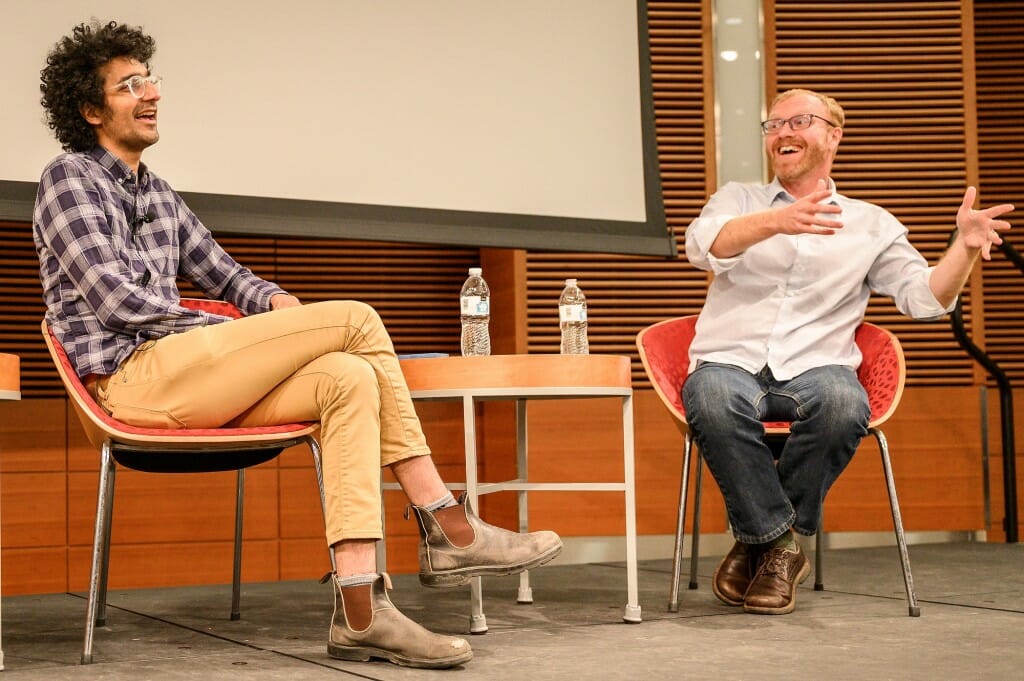
Nasser laughs with Soren Wheeler, Radiolab’s executive editor and a previous UW–Madison Science Journalist in Residence, on stage as they discuss story ideas that Wheeler has nixed. Photo by: Althea Dotzour
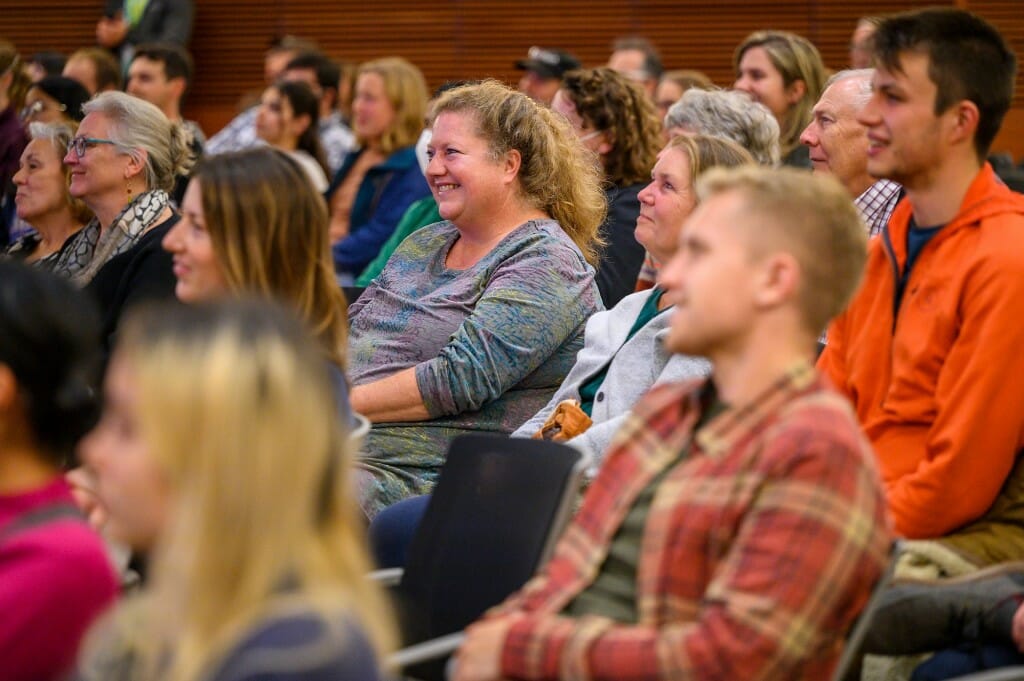
Audience members laugh during a Wisconsin Science Festival and Crossroads of Ideas talk by Nasser. Nasser suggested using Wikipedia’s “random article” button and then to keep clicking on interesting links until you get to something you never knew. Photo by: Althea Dotzour
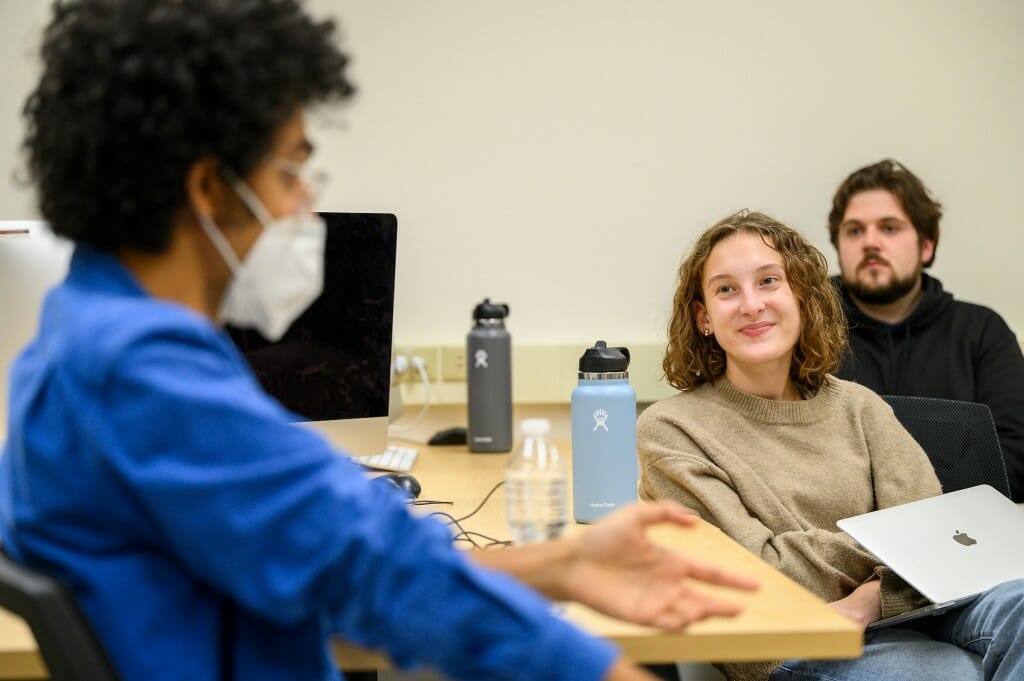
Students in Creative Nonfiction (J405) Sophia Vento and Ethan Wollins listen to Latif Nasser as he shares his tips for finding interesting stories (which included trolling Wikipedia, signing up for lots of science newsletters, talking to lots of people, and doing deep dives into Google to find answers to questions). Photo by: Althea Dotzour
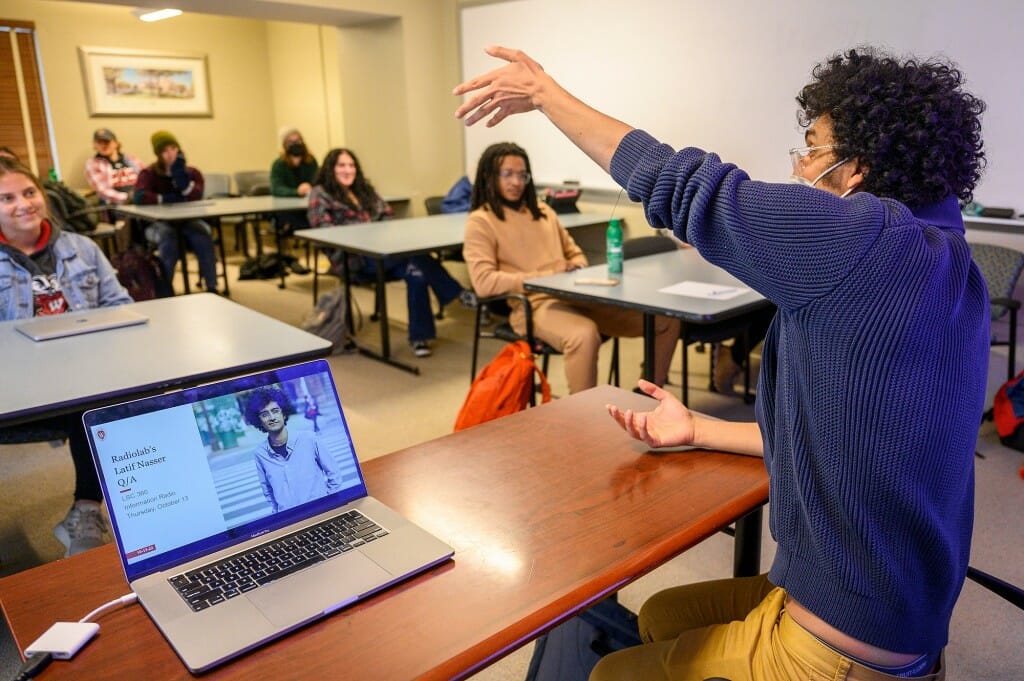
Nasser gestures while answering student questions about how to share science when scientific questions have changing answers. Nasser was visiting Information Radio (LSC360), in Hiram Smith Hall. Nasser’s said: “Lead with the question, then be like, ‘There are all these people going to these absurd lengths to try to answer this question. This is the best they’ve come up with. Maybe this is true. This is as far as we can tell what’s true. And maybe it’s going to change tomorrow. Being honest with you, it’s probably going to change tomorrow. But this is the best we’ve got.’ To me, that’s a much more honest and faithful to science way to do it. And it feels for people reading it like they’re not being jerked around.” Photo by: Althea Dotzour
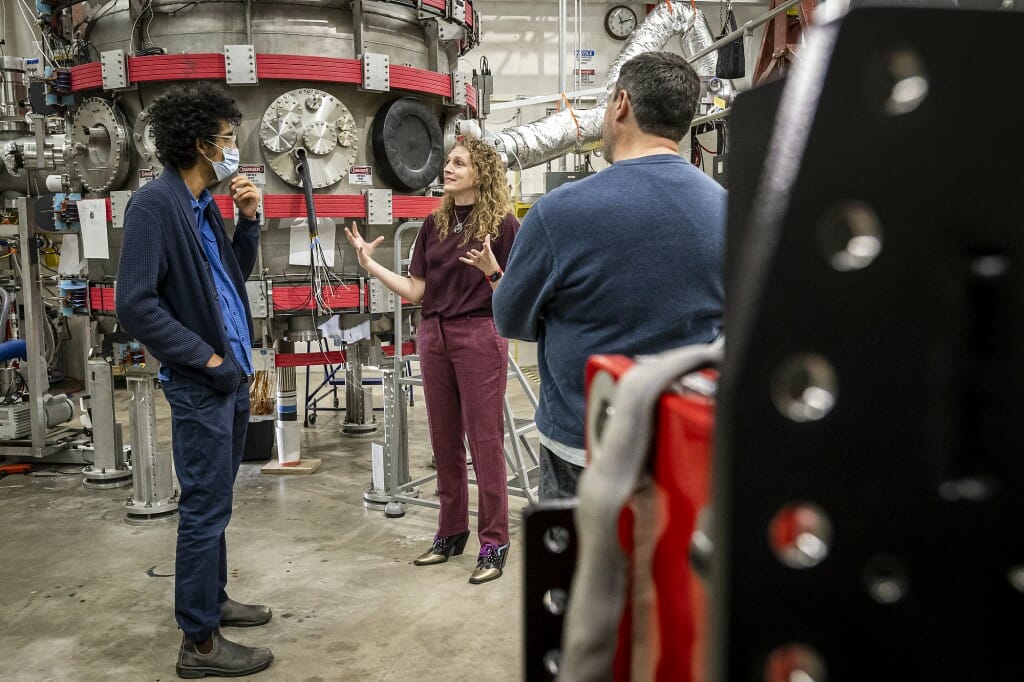
Nasser tours the lab of Steffi Diem, center, professor of engineering physics in the College of Engineering, in the Engineering Research Building. Diem runs the Pegasus-III Experiment, which is working on ways to reduce the cost and complexity of fusion power plants in the future. Photo by: Bryce Richter
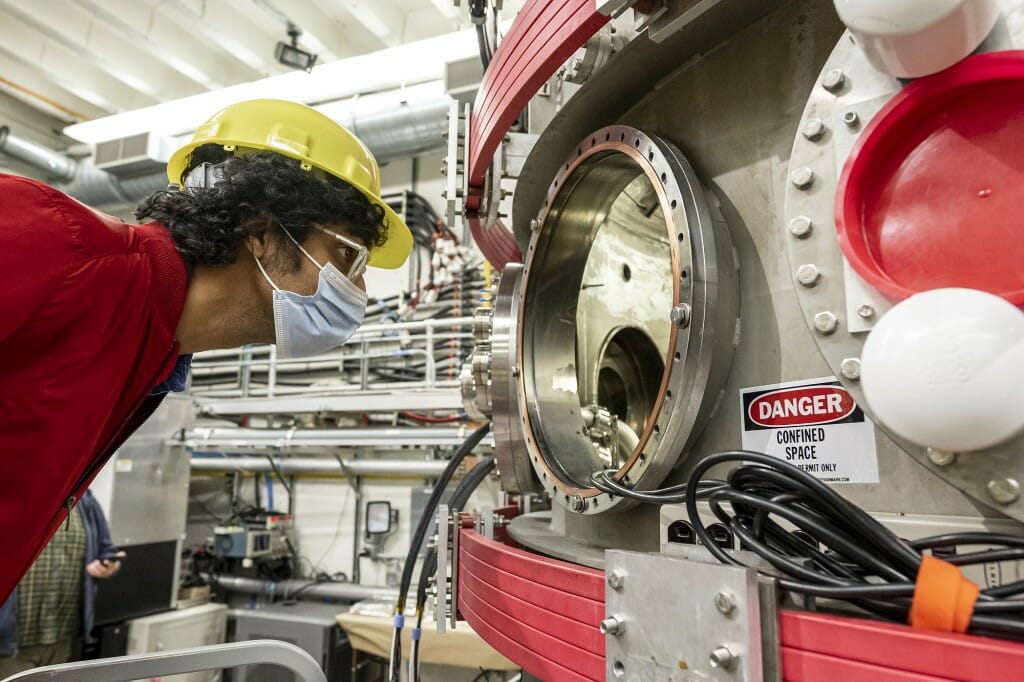
Nasser gets a closer look at the Pegasus-III tokamak device, which allows for fusion research. Photo by: Bryce Richter
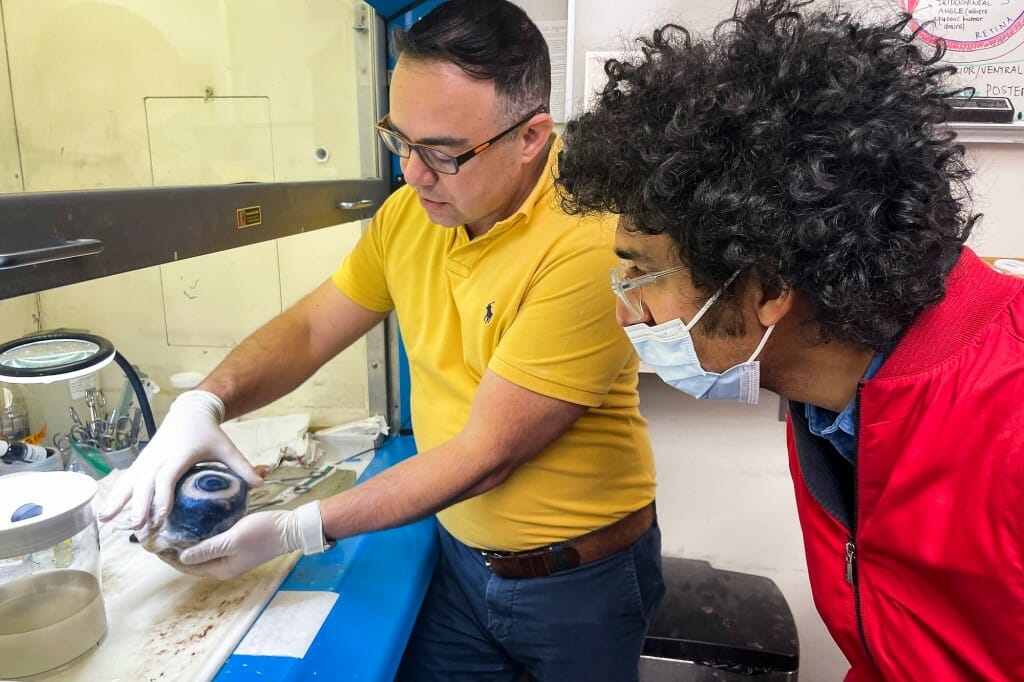
Leandro Teixeira, left, professor of pathobiological sciences in the School of Veterinary Medicine, describes his research to Nasser, as Nasser looks at a blue whale eye while visiting the Comparative Ocular Pathology Laboratory of Wisconsin, or COPLOW. Photo by Elise Mahon
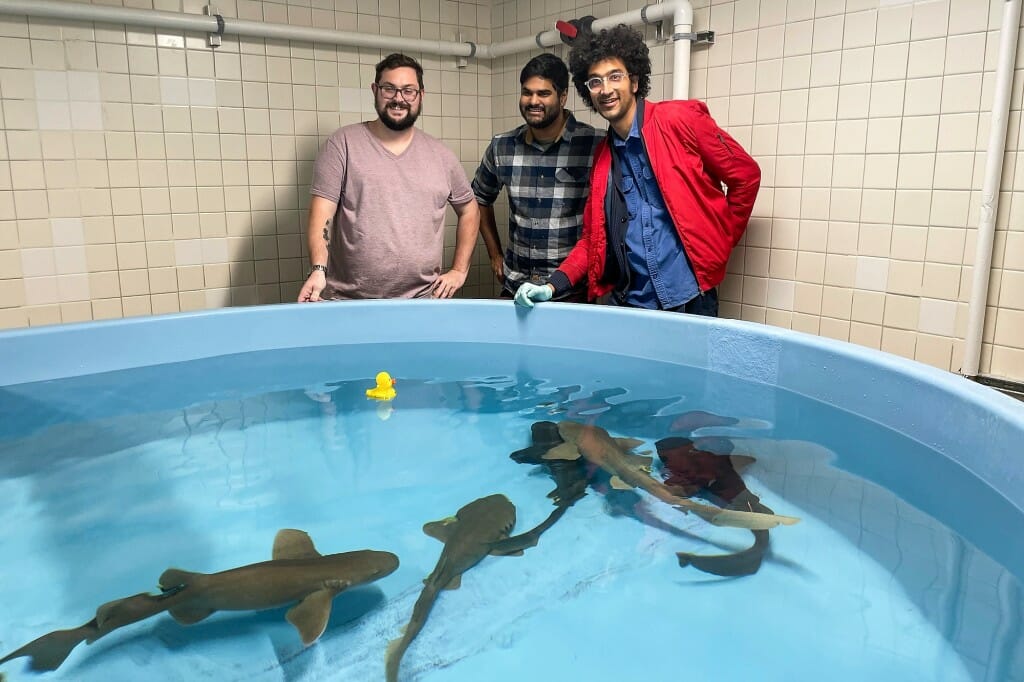
UW–Madison graduate student Joe Gallant, postdoctoral research Gihan Gunaratne and Nasser stand behind a tank of nurse sharks in the research lab of Aaron LeBeau, associate professor in the Department of Pathology and Laboratory Medicine. The sharks have unique immune systems that could contribute to future treatments for coronaviruses and cancer. Photo by Elise Mahon
